2023 - RECORD RAIN & COLDER THAN NORMAL

Harvest has just begun as this letter goes to press. It has been a very wet and cooler than normal year for sure. We have accumulated more than 30 inches of rain this year, which is slightly more than my wettest year on record way back in 1998 (the year my son was born). We have had just 3 days 95 degrees or higher and just one single day that reached 100 degrees for a few moments before the coastal breezes blew back in to cool things off. The chart above shows the daily recorded temperatures of 2022 in green and 2023 in blue. It has been a tough ripening year for sure, with lower lows and lower highs. 2023 saw a good late June to early July and then a few amazing days in September, but overall, we are about 3 weeks behind last year, which is a bit scary since we finished harvesting in late November last year. I have never seen a harvest go into December, but if the weather cooperates, it could be possible this year. That is a huge “IF”, since there is rain predicted later this month and we even got a bit of rain last week. It has been one of the nicest years for people, but not quite the best year for grapes. I know that I am contradicting myself here, but actually, it has been an amazing year for grapes, and I have incredibly high expectations, but we just need to clock a bit more heat to finish ripening some of our later varieties like Grenache and Mourvèdre and Roussanne. Sugars are slowly accumulating while acidity remains very high, which is an ideal situation. We want the sugar and flavor intensity to slowly rise, while the acidity slowly lowers. This could very well be about the most naturally balanced vintage ever if things keep moving along. Unfortunately, it is still a bit too early to tell even though we are heading deeper into October. I am a farmer at heart, so I will continue to wake up each morning quite early with an unhealthy (some might say crazy) amount of optimism. At this point we cannot do much more as we have just finished our 3rd fruit drop pass to lower yields while performing a bit of triage to ensure just the best clusters remain on the vine. As the days get shorter and the nights a bit colder, we are literally running out of enough sunlight to fully mature our later ripening varieties. Dropping fruit allows the vines to focus their energy on maturing a smaller crop, which effectively speeds up sugar and flavor accumulation in the fewer clusters that remain. We always do 2 passes per year at very specific moments to manage yield and flavors, but this year forced us to do a third pass. Each pass is very time consuming and expensive as it must be performed by well-trained vineyard employees who have to assess approximate yield and cluster spacing and damaged clusters and overall expectations while walking countless rows and making these informed decisions on the fly. Harvest is always the sum of countless decisions, but this year there are a few more variables at play requiring a few more decisions. We weigh what we know based upon 30+ years of experience and then we call it in and hope for the best. I am confident in ourselves and our team and our experience. Mark my words, some great wines will come out of this vintage, and I look forward to sharing them with you one day down the road...
Spring 2021 Wine Club Newsletter
Prior to each new Club Release, I try to get lost in my thoughts a bit. I close the door to the outside world, open the new wines alongside some older wines, and attempt to get reacquainted with the new releases. You see, any “new” release from us has actually been in the works for decades. These new wines are the product of everything that has come before…all the tiny and monumental and sometimes accidental decisions that have been made over the last 30 years. Each new vintage is a jumping off place and a unique opportunity to apply everything experienced and learned in the past, to a new vintage. It is an annual cycle of renewal. While we strive for consistency, we are ever hopeful that our wines are ever-so-slowly improving. Sometimes as we attempt to move forward, we throw caution to the wind and get a bit experimental. These “experiments” often end up on the cutting room floor. But we never stop seeking deeper truths; we never stop trying. Winegrowing is a generational journey, and sadly, winemakers only get a single lifetime to pursue perfection. Luckily, I started early in life, at just 19 years of age, so I may be lucky enough to see more vintages than others. But, in the end, it is but a blip in time. This is why I rise early every day, rush off to the winery full of plans and big ideas for today and for tomorrow. When we first moved to the Curtis Estate back in 2005, I had only a cursory understanding of the viticultural promise that surrounded the winery. One block that initially confounded me was a small parcel of Cinsault (now about 25 years old). It was rather weak looking, growing in poor soils made up of sand and gravel. It produced large berries of rather ordinary fruit. Along with all the other blocks on the new Estate, we got work on this small block, trying to improve the quality. We were mostly fermenting it as a red wine, with the best vintages making it into bottle. After a few years of experimentation, we realized that this particular block was better suited for Rosé production. Our newly released 2020 Espérance Rosé is the validation of all that hard work. It ranks as our best ever! Even as we were perfecting our Rosé, part of me missed the red version of Cinsault. We never stopped dreaming and scheming. We are extremely proud to announce the 2020 Étancher, a semi-carbonic blend of Grenache and Cinsault. It is crisp, light, delicious and the perfect wine for right now. Please read all about this wine in a new Journal (blog) that I posted to our website. We only bottled up 100 cases, so it will disappear quickly. We have a few other new wines that will be released later this year – very personal wines that I cannot wait to share with you all. More about that soon… Back to being lost in thought, tasting through the new wines. They do really taste like we have put our 30 years of experience to good use. The 2019 Grenache represents the pinnacle of our Grenache growing efforts. This wine is dark, rich, drinkable now, but also built to improve with age. The 2019 Syrah Watch Hill is a supremely profound wine – a product of extremely limited yields and manically hands-on winemaking. This is a real stunner, dark as moonless night, with a bit of grip that is making it a bit less accessible right now. Hang on to this one for at least a few more months. The 2019 Roasted Slope is the most drinkable now – the Viognier provides real freshness and lift. All of these wines will improve with time, so do not be afraid to be a bit more patient. If you must enjoy them sooner than later, I would suggest that you open them up and decant them to provide a bit of softening oxygen. Thank you for your continued support. I sincerely hope that you enjoy the new wines.
Étancher: Hard to say, fun to drink
I am super stoked to release this brand-new wine – the 2020 Étancher is literally the perfect wine for right now. Here is a bit of the back story about how it came to be and how it was crafted and why you should snap some up before it is all gone.

The Back Story
Andrew Murray Vineyards crafts relatively few white wines and very few cases of those whites. It is not because I do not love white wine, but rather because our terroir is better suited to reds. We actually bottle more of our Rosé (made from red grapes) each year than the sum of all of our whites. So, I am always seeking opportunities to show off our amazing terroir in a new and fun way, while pushing the boundaries of crafting lighter wines for warmer days. Our sister (alter-ego) brand E11even Wines has been experimenting and perfecting a lighter red named She’ll Be Right over the past couple of years, so the idea was to take the successful R & D of Carbonic Winemaking over to the AMV side of things. In 2020 we selected a couple sections of the vineyard that were struggling due to the heat spikes that we endured – one section of our Grenache and another of our Cinsault – and reserved them for this new project. The results exceeded our expectations. We had the perfect wine, but we did not have a name yet…
Carbonic Winemaking?
The rather hipster/laissez-faire style of winemaking, Carbonic Maceration, has literally been around for generations. But somehow everything old is new again (like when my younger children asked me if I had ever heard of a cassette tape or these amazing shoes from a company called Vans). The concept of a newer generation picking up trends left behind by an older generation is nothing new, but it still fascinates me. Often times “old-fashioned” ways go out of style for a reason, usually centered around the notion that the style was increasingly becoming un-loved or even vilified. Carbonic winemaking is certainly a buzz word today, but most wines employing the concepts are actually Semi-Carbonic in truth. The most famous and iconic Carbonic wines are Beaujolais Nouveau, and sadly they are also the most maligned of all the Carbonic wines due to their early release, crunchy texture, and overt fruitiness. Our aim with our new Semi-Carbonic wine was to take the best of the BeauJo and then update and modernize it for our own taste.
2020 Étancher – what’s in a name?

As the wine was taking shape in the cellar, I realized that I needed to come up with yet another wine name – no easy feat given that so many new wines are born and named every year. I knew that I wanted the name to be in French and have an accent Aigu over an É (Like all of our blends – Espérance, Enchanté, Étranger, Espérance Rosé…). I also knew that this new wine was truly delicious and amazingly enough it quenched your thirst like a cold beer. Thus, an exhaustive online search began, resulting in another wine name from our portfolio that is about as hard to pronounce as all of our other blends. Étancher means to Quench in French, though truthfully the use of this word has fallen out of favor in France. But, just like Carbonic winemaking is bringing an old winemaking style back to life, we are happy to bring new life to an older word. This new wine might be hard to pronounce but it is super freaking fun to quaff down!
Deep Dive on Carbonic Winemaking
Carbonic maceration uses whole bunches only and requires a vessel that can be filled with carbon dioxide and closed to prevent the ingress of air. The first stage is an intra-cellular, anaerobic, enzymatic metabolism inside each berry, without the interaction of yeast.
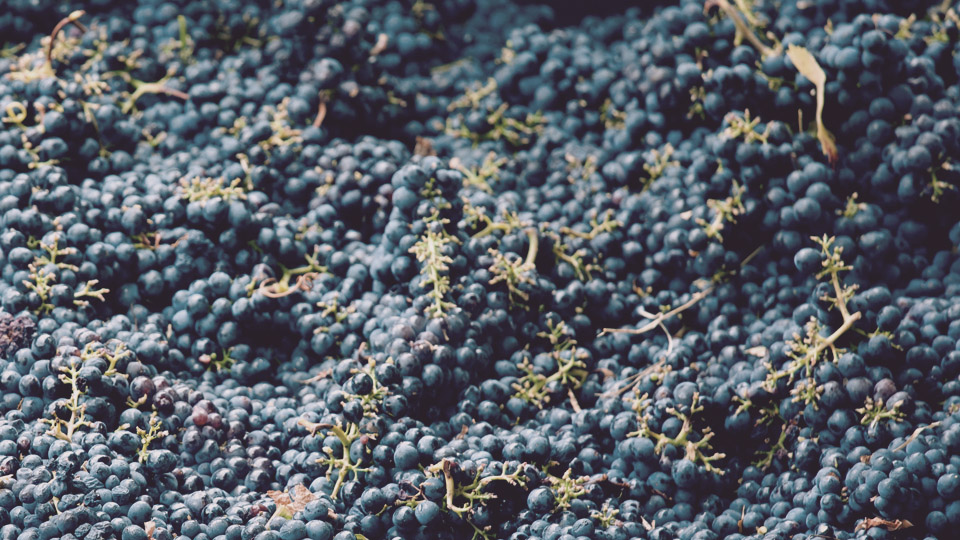
The absence of oxygen causes a shift from respiratory to fermentative metabolism, and this shift is more rapid when carbon dioxide has been used to flush the vessel. It is important to note that there must be enough carbon dioxide to prevent spoilage micro-organisms including acetobacter from growing. True carbonic maceration appears to be quite rare, rather technical, and quite difficult because the weight of bunches inevitably crushes fruit at the bottom releasing some juice, but if the vessel is fully flushed with carbon dioxide, then there is no oxygen to stimulate an alcoholic fermentation.
Inside the berry, enzymes convert the grape sugars to alcohol (rather than yeast). These reactions cause the temperature to rise just like a typical yeast fermentation. A temperature of 35°C will kill the berry after about eight days and this stretches to about two weeks at 15°C.
Studies show that whole, intact grapes under carbon dioxide:
- lose 20% of their sugar (this effectively lowers the final potential alcohol)
- gain just 2% in alcoholic strength
- gain 10 times the amount of glycerol (rich mouthfeel)
- lose 50% of malic acid (this de-acidifies the wine, which is why the grapes must be picked with a higher natural acidity)
- increase pH by 0.25 units
Along with these changes, flavorful and aromatic compounds are also produced. The loss of malic acid inside the berry is not due to malolactic fermentation –the malic acid is metabolized to other acids including oxaloacetic, pyruvic and succinic acids, as well as to alcohol.
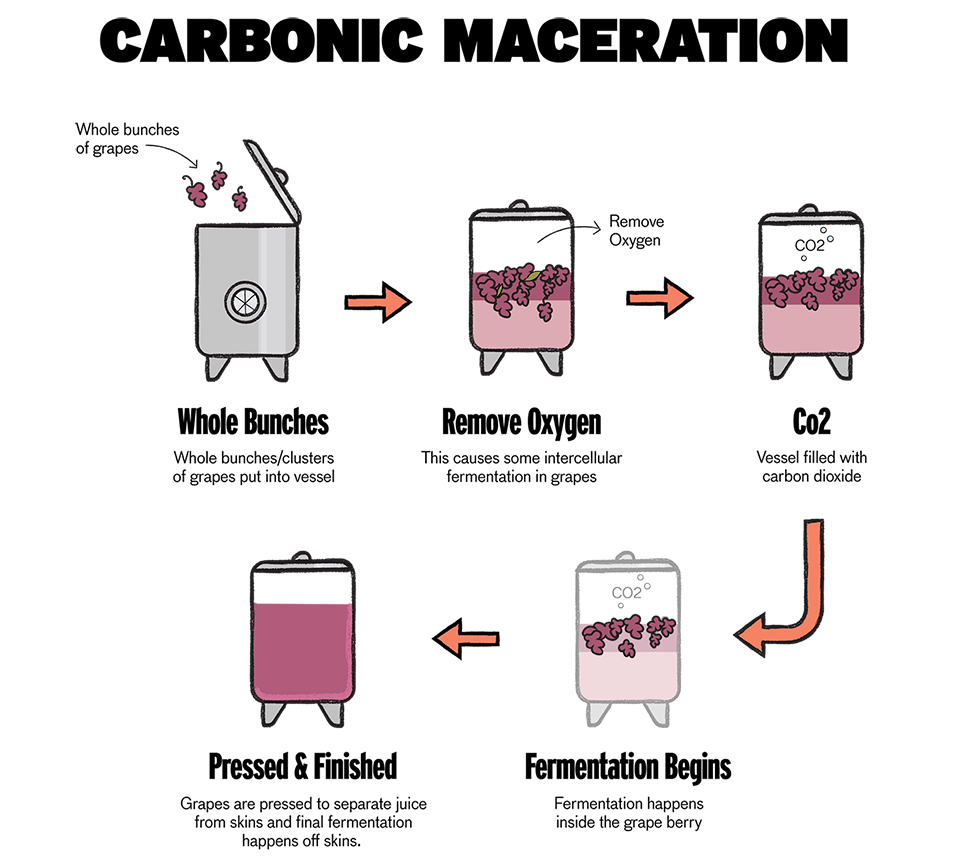
Phase one, the intracellular phase, finishes when alcohol reaches about 2%, causing the death of the berry, or when grapes burst, usually by weight from above. Once this intracellular process is complete, grapes are pressed. Free run wine, produced by alcohol fermentation due to the weight of fruit above may be run off to a separate vat. This first stage maceration (whether from full or semi-carbonic maceration) can last from a few days to a few weeks. As with destemmed-fruit fermentation, time and temperature are important factors.
The second stage, the alcoholic fermentation and malolactic fermentation then take place. It is suggested that the wine be kept a modest temperature of 20°C to preserve the fragrance of the carbonic maceration phase. This phase happens quite quickly after pressing despite the remaining sugar in the must.
It is the fragrance of the carbonic and semi-carbonic maceration flavors that mark out this vinification technique. Oft cited descriptors including hyacinth, vanilla, cherry, banana, raspberry, a fresh, aromatic nose, bubblegum, and cinnamon. There are usually “higher concentrations of ethyl decanoate [fruity], eugenol [clove], methyl and ethyl vanillates [vanilla], ethyl and vinyl guaiacols [smoke], and ethyl and vinyl phenols [spice] develop during carbonic maceration than in traditional vinification.” This suggests that wines made in this style often have an aroma and flavor profile that transcend the variety from which they are crafted.
In addition to this spectrum of bright aroma and flavor characters, semi-carbonic maceration wines generally have less color and tannin than wines made using destemmed fruit with punchdown and/or pumpover. Anecdotally, alcohol is often not too high, which is a bonus given current trends.
This is the basic model of semi-carbonic maceration, which naturally favors brightness and perfume of fruit, while minimizing color and tannin. They are often described as crunchy because they taste, and smell of fresh, crunchy berries plucked before full maturity. This perfectly describes our new 2020 Étancher.
Naked. Asleep. And Alive.
The winter months vineyard offers up images of row upon row of bare trunks. This is the time of the year when the grapevine shakes off the previous vintage, shedding its leaves and settles in for a brief rest. During this period, the grapevine is a trunk without buds or vegetative growth. This naked rest is designed and ultimately crucial for grapevine survival amidst low temperatures and adverse weather conditions.
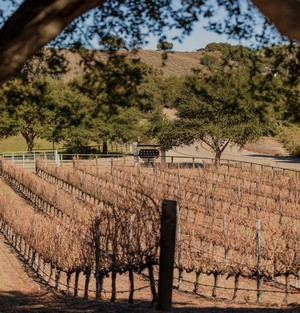
Life in Dormancy
When grapevines are fully devoid of vegetation, otherwise referred to as “dormant”, during the coldest part of midwinter, buds are isolated from the plant's vascular system, desiccated, and filled with compounds that resist freezing.
The vines are consequently pruned throughout these months to prepare them for shoot and fruit growth once spring arrives. This stage is crucial in ensuring fruit quality, because every vine requires individual care. On the Curtis Estate Vineyard, we employ a pruning method known as spur pruning on our varietals – with the exception of Sauvignon Blanc.
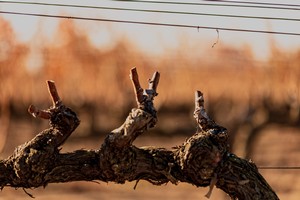
Spur pruning is done on vines that retain one or two pairs of long canes (a permanent cordon) trained along a trellis system. New canes that have grown along the permanent cordon are cut back to a small shoot containing two buds, known as a spur. In spring, new growth develops from the buds on the spur. It is this bud development that signifies the awakening - the tell-tale sign that the grapevine is emerging from dormancy.
Rebirth
It takes both increasing temperature and tissue wetting for bud break and shoot emergence to occur. When growth starts in the spring, towards the middle of March, the grapevine awakens, sap begins to stir and sets on course to re-establish the vascular connections between its buds and roots. As warm temperatures in the spring increase and buds are rehydrated, they gradually deacclimate and become less resistant to cold temperature. As temperatures rise above freezing, temperature-dependent enzymes begin to activate. As soils warm, so does the increasing hydration of buds. As buds swell, they initiate new vascular connections at their attachments to the canes.
In early Spring (April), as the temperatures rise, the Curtis Estate is prepared for the grapevines emergence from sleep. Rows are plowed down and cleared of weeds. Trellises are maintained. Canes are tied and selected for production of new shoots and clusters. It is at this point in the
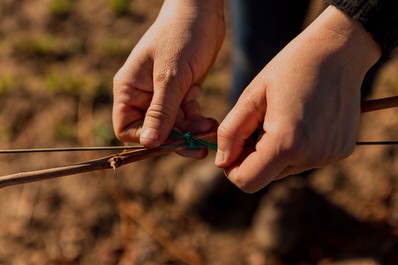

A Bewitching Duo
Delighted. Overjoyed. Smitten. To bewitch, to charm, to attract – to enchant. In English, the word enchant means to influence by charms and incantation, to bewitch, attract, move deeply, or rouse to ecstatic admiration.
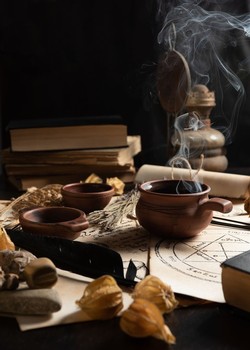
So, where does this charm‘ing’ word come from? The Oxford English Dictionary provides historical notes indicating that the modern English term enchant is derived from Middle English - the language spoken in England from 1100 to 1500 - meaning, to put under a spell and delude. Originally spelled "incant" in Middle English, it was known otherwise as in an incantation.
Not surprisingly, the English word enchant has an earlier origin dating back centuries before the Middle English were spelling out incantations. The word is found to come from the French term, enchanter, which in turn originated from the Latin incantare, meaning "in" + cantere, to "sing." The French term enchanter is the infinitive form of the word, meaning to enchant, to delight, to be overjoyed, or to bewitch.
While the similarities in the French and English terms are clear, with quite similar spellings, the pronunciations are a bit different. The word enchanté is pronounced [a(n) sha(n) tay] in French.
Even more currently bewitching - the French greet each other with a “delighted to meet you”, or “Enchanté”. In the wine world of Andrew Murray - and aptly named in true ying and yang style - our signature white blend of Grenache Blanc and Roussanne signifies this “nice to meet you” meeting of Roussanne and Grenache Blanc. See what we did there?
Bewitching varietals in their own ways - Roussanne is rich and unctuous, while Grenache Blanc is bright and racy - the two complement each other perfectly! Fermented and aged in older French Oak barrels, The Enchanté blend is a dry white wine with a beautifully smooth texture. A perfect wine for a historically incanting and delightful word.
Vintage Highlight: 2017 Enchanté
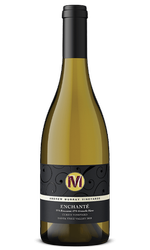 This wine is 55% Roussanne and 45% Grenache Blanc from grapes grown on the Curtis Estate Vineyard, which lies in the geographic heart of the Santa Ynez Valley’s Rhône Zone. The 2017 Enchanté is rich and dry, with vibrant minerality and balanced acidity. The predominant aromas and flavors consist of fresh melon, pear, marzipan and honey.
This wine is 55% Roussanne and 45% Grenache Blanc from grapes grown on the Curtis Estate Vineyard, which lies in the geographic heart of the Santa Ynez Valley’s Rhône Zone. The 2017 Enchanté is rich and dry, with vibrant minerality and balanced acidity. The predominant aromas and flavors consist of fresh melon, pear, marzipan and honey.
91 points – Jeb Dunnuck
“Brought up in 10% new French Oak, it has a more restrained bouquet of poached pears, spice, orange blossom, and just a hint of toast. With a medium body, a rounded, textured style on the palate, and a great finish, it would give plenty of Southern Rhône whites a run for their money. It’s another white that’s going to shine on the dinner table.”
Speaking of Dinner - Pair the 2017 Enchanté with Half Baked Harvest’s Creamy Spinach and Artichoke Salmon and be prepared for a bewitchingly delicious evening!
Étranger - Pursuit of Perfection
A few years after taking over the Curtis Estate, I started to realize the quality and potential for amazing Mourvèdre. It is not everyone’s go to grape. Not usually someone’s first love. It doesn’t roll off the tongue like Syrah or Grenache. But we began to see the potential in 2013 and so we started to really work the vines – pruning them way back, restricting yield and irrigation, competing cover crops, careful shoot positioning and cluster thinning and even partial cluster thinning. We went hard at Mourvèdre, hoping the extra work and expense might pay off.
Our Mourvèdre bottlings have slowly been improving and garnering ever higher scores. We watched as our customers would show up to the winery thinking they might purchase Syrah or Grenache and then ultimately leave with our Mourvèdre. The wine was in the bottle and in the glass. We noticed we were on to something. SO, we pushed even harder. I dug into my early memories of trips to the Rhône valley (in the early 90s) where I remembered that I had learned that Mourvèdre was usually the 2nd or 3rd grape in a blend. Rarely was it ever stand alone. It was thought to be too wild and unruly with awful tannins and prone to spoilage by Brettanomyces (a spoilage yeast). It was never highly regarded or prized for any singularity or standout qualities. It was essentially relegated to a “team-player” status…a grape that could provide structure and a bit of color in warmer vintages. Then memories of more recent trips popped up where I remember tasting amazing stand alone Mourvèdre that was fetching hundreds of dollars per bottle with long waiting lists just to purchase a bottle or two. Growers were increasingly planting more Mourvèdre with better clones and building blends around Mourvèdre. It really reminded me of our own Mourvèdre and its special and unique qualities that deserved to stand alone or at least as the star.
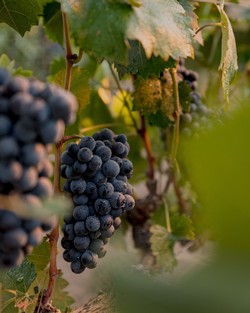 So, in 2015 I started dreaming of a Mourvèdre dominant blend as a counter-point to our Espérance, which has been a Grenache dominant blend that we have crafted since our very first vintage in 1994. This new wine was to be deeper, darker, more complex and engaging. As the idea was evolving and I was tasting through our various lots, a blend started to show itself as worthy of a new bottling, focused around our Clone 369 Mourvèdre. The wine was amazing, but seemed to lack the spark that I was looking for. I must confess that I was a bit downtrodden. Quite a bit of effort and tastings and time had gone into the idea of this new wine. Fast forward a few weeks when I was working up the final blend of our Estate Grown Petite Sirah for our E11even Wines brand. When those first sips hit my palate, sparks literally flew and my synapses fired and a light went on – this was the missing piece of the puzzle. But, Petite Sirah is not technically a Rhône variety (IMHO – it is NOT a Rhône variety). I started adding various amounts of PS to our final blend of this new Mourvèdre based wine. It was not easy to add such a dark and concentrated wine to this new blend. It was way too easy to over-power the Mourvèdre, even with just a small amount. But, I just knew that the wine was there – I just had to try harder.
So, in 2015 I started dreaming of a Mourvèdre dominant blend as a counter-point to our Espérance, which has been a Grenache dominant blend that we have crafted since our very first vintage in 1994. This new wine was to be deeper, darker, more complex and engaging. As the idea was evolving and I was tasting through our various lots, a blend started to show itself as worthy of a new bottling, focused around our Clone 369 Mourvèdre. The wine was amazing, but seemed to lack the spark that I was looking for. I must confess that I was a bit downtrodden. Quite a bit of effort and tastings and time had gone into the idea of this new wine. Fast forward a few weeks when I was working up the final blend of our Estate Grown Petite Sirah for our E11even Wines brand. When those first sips hit my palate, sparks literally flew and my synapses fired and a light went on – this was the missing piece of the puzzle. But, Petite Sirah is not technically a Rhône variety (IMHO – it is NOT a Rhône variety). I started adding various amounts of PS to our final blend of this new Mourvèdre based wine. It was not easy to add such a dark and concentrated wine to this new blend. It was way too easy to over-power the Mourvèdre, even with just a small amount. But, I just knew that the wine was there – I just had to try harder.
Lots of frustrating days and miserably purple stained teeth later, our new wine was born. We blended up a small amount and left in the glass and in a bottle to see how long it stayed “fresh”. The wine was magical. I was giddy with excitement. We had not birthed a new blend in a long while. But everything just felt right. This was the wine and this was the time.. Though, I was still a bit conflicted, we had never crafted an AMV wine with such a foreign grape like that. It felt uncomfortable and dishonest…but, the wine showed me the way. I had been unwavering in my enthusiastic support of Rhône varieties, here I was nearly 30 years later, bringing a stranger into our AMV wines.
Now that we had the wine, we had to name it. Some might find joy in creating new wines and new names, but I prefer consistency. (Heck, just look at our label that has essentially remained unchanged since  our first vintage). I value predictability, as long as there is immense quality and pleasure to be found. As I was lying awake at night dreaming of what to name this wine, I kept thinking about the foreign and alien grape that I was suddenly bringing into the fold. That led me back to High School when I was forced to read Albert Camus’ famous tome, Étranger, an existential treatise. Étranger translates from French to English as the “Foreigner, Outsider, and Stranger” – apt descriptors for the Petite Sirah in our blend… So, I christened the new wine, designed a label based upon our other blends (Espérance and Enchanté), where the color band on the label helps to demonstrate the flavor and intensity expectations. I chose a dark grey for this color band to imply the dark richness of this wine. We produced a scant 150 cases of the 2015. We were so excited that it was enjoyed by all, included the critical press that blessed it with great scores.
our first vintage). I value predictability, as long as there is immense quality and pleasure to be found. As I was lying awake at night dreaming of what to name this wine, I kept thinking about the foreign and alien grape that I was suddenly bringing into the fold. That led me back to High School when I was forced to read Albert Camus’ famous tome, Étranger, an existential treatise. Étranger translates from French to English as the “Foreigner, Outsider, and Stranger” – apt descriptors for the Petite Sirah in our blend… So, I christened the new wine, designed a label based upon our other blends (Espérance and Enchanté), where the color band on the label helps to demonstrate the flavor and intensity expectations. I chose a dark grey for this color band to imply the dark richness of this wine. We produced a scant 150 cases of the 2015. We were so excited that it was enjoyed by all, included the critical press that blessed it with great scores.
We are now ready to release our 3rd vintage of this wine, always learning and tweaking and improving upon each vintage. The 2018 Étranger is without a doubt the best one yet, garnering an impressive 95 Point review from Jeb Dunnuck. Big dreams, careful farming, tiny yields, unwavering focus, and a relentless pursuit of perfection has yielded this stunning bottle of wine. It is study in contrast – having both power and grace, drinkability and a future-proof ability to age gracefully for a decade and more. Drink or hold, you choose. Just don’t miss out on this beauty. It is offered first to our wine club members at a special pre-release price – $50 (no further discounts apply). Later in the year, we will release any remaining bottles at full price. ($75) This is your one chance to get your hands on this rare treat at special members-only pricing. Don’t let this wine be a stranger to your cellar!
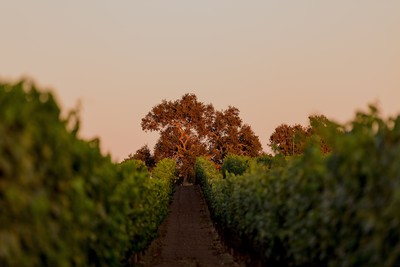
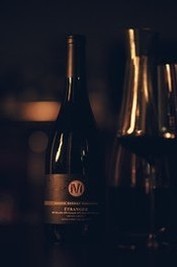
From the Bottling Line to Cellar Master
Meet our Cellar Master, Victor Garibay.

Victor's career in the wine industry began in 1996 with the Firestone Family. His dedication to the craft was not unnoticed and he was swiftly promoted up the ranks - from bottling line to cellar worker, to Cellar Lead and finally Cellar Master. In 2014 Victor joined Andrew Murray Vineyards. We could not have lucked out more! Victor embodies everything that is great about being part of a team. Beginning with his daily wave hello, his kind and helpful spirit makes him a joy to work with. Described by his co-workers as super chill, respectful, responsible, friendly and an all around pleasant person to be around. And boy, does the guy know how to multitask! No one who knows our cellar quite like Victor.
Thank you for all that you bring to the AMV team! Cheers Victor!
More about our fabulous Cellar Master:
If you could drink one bottle of AMV wine, what would it be? Varietal? Vintage?
Either the 2015 or 2016 Watch Hill and Roasted Slope. I love the texture, aroma and complexities of those vintages. So smooth.
What is your favorite meal to eat with AMV Wine?
Steak. Maybe a Sirloin and a fresh salad.
Tell me about your favorite AMV memory.
There isn’t just one. I like the cellar work. Working with the people in the cellar every day. That is my favorite.
What do you enjoy most about your job?
I don’t just do one thing. Every day brings something different.
If you could do one task in the cellar, what would it be?
Crushing. I would crush every day. Crushing is always different, always something new.
What do you like most about working for AMV?
I like the way Andrew treats us (his workers). He is nice. Explains everything, takes the time to go over the reasons behind the task.
What grape do you most look forward to working with during harvest?
Why?
Because of the fruit. The clusters are not as delicate as a Cabernet Sauvignon or Pinot Noir. They are big and solid and nice to work with.
Recall a funny memory working in the cellar.
Ha – one of our crew fell into a fermentation bin during a punch down. He was soaked in grape must all the way to his waist. When he got out, we gave him a few sprays with the hose and he was wet all day.
What are you most looking forward to in 2021?
To learn more about how to manage the aging of wines. To get a better understanding of analysis and labwork.
Of all the wines currently in barrel, which wine are you most excited to try?
2019 Slide Hill Vineyard Syrah.
Why?
It was a tough vintage with the fires. It wasn’t too hot, but not too cold, like it normally is. I’m excited to try a warmer vintage of this wine.

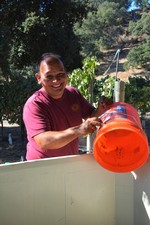

Fall 2020 Wine Club Newsletter
This year began like any other year, except that January found us busier than ever after deciding to let our Syrah Tous les Jours rest an extra 6 months in barrel before bottling in order to allow the wine a bit more time to come around before committing it to bottle. (The 2018 Syrah Tous les Jours was recently awarded the highest trio of scores ever – so it was worth the wait!) I was filled with as much hope as ever since we had just completed our largest harvest ever and heck, it was 2020. Just saying 2020 sounded cool. It brought up evocative memories of my youth about what the future might look like (remember the classic film Blade Runner – it was set in 2019/2020). 2020 is how one describes perfect vision. I was focused and ready for an amazing 2020 – or so I thought. In reality, I was only ready for the 2020 of my vivid imagination and dreams. I do not think any of us were ready for the 2020 that we actually got. By all accounts it has been a terrible year, certainly one of the worst ever for me. I have already written about this, so I am not going into it again here. Rather, I want to focus on the 2020 harvest that we are in currently in the middle of. Every harvest is a bit nutty and unpredictable, but for some unknown and very cruel reason, the 2020 vintage has been nearly unbearable. Despite the challenges of a global pandemic, we were looking at a picture perfect harvest. We had enough rain to saturate and cleanse our soils in the winter. Yields looked fairly normal. Budbreak was slightly delayed so it looked like another later vintage (we prefer later vintages). By most accounts, again in spite of all the bad news, most of us growers were still maintaining a positive attitude. I wanted (I always want) to craft our best wines ever this year as a giant middle finger to Covid. I wanted to win, even as our world was losing. Well, mother nature had an entirely different plan for us. She threw 3 devasting heat waves at us. We clocked 112 on the now infamous Sunday in early September (9/6/20). This record high literally scorched the south-facing side of several of our prized blocks. Just as temps returned towards normal, we had 2 more heat spikes in early October that reached into the low 100s. We are a famously cool climate, one of the coolest in California, but this year was not a “cool” vintage by any stretch of the imagination. The heat has reduced yields and increased concentration, so 2020 will be a smaller vintage of impressively dark wines for us. Despite all of this troubling news, we are the lucky ones this year. Other parts of the west not only suffered through Covid and heat – they had the added devastation of another harvest marred by fires. Our hearts break for our friends and neighbors north of us that found themselves in a waking and recurring nightmare of out of control fires. Their resiliency and tenacity are daily inspiration for me to keep moving forward, when in reality, I just want to stay in bed for the rest of the year. I am reminded of a book that I read about Churchill this summer, called The Splendid and the Vile. The name comes from John Coville’s contemporaneous diaries of life alongside Churchill, as his private secretary. Coville described the sight of bombs falling on London as both Splendid and Vile – strangely beautiful and absolutely horrific. Churchill famously ran up to the rooftops (sometime with a glass of wine) to watch the bombing raids on his beloved city. Though sheltered and sequestered, he wanted to be as close to the devastation as possible. He leaned way into the war and it reminded him daily of what was at stake. 2020 is not even close to what the world faced or witnessed during WWII, but there is some inspiring fortitude to be found in learning how the world kept putting one foot in front of the other. The 2020 vintage is both a masterpiece and a horrific sight. It is both Splendid and Vile. Just the opportunity to grow and harvest grapes this year has been a beautiful miracle. It has kept me moving forward and thinking ahead. It has been a real gift, despite the challenges. Though I cannot imagine life without wine, it is very much a luxury, conceived and crafted through the millennia to bring traditions and joy into our lives. I raise a glass to all of you and your loved ones and neighbors and friends in hopes of a better tomorrow. All of us at AMV hope that our wines bring some joy into your lives. We can and will get through this and more than ever, WINE is the answer! Thank you very much for your continued support of our family farm and winery,
Andrew
For a copy of the complete Fall Wine Club Newsletter, click here.
Spring 2020 Wine Club Newsletter
A year ago, I wrote my whole newsletter about the power of wine to bring people together. By May 1st of 2019 I had already completed 4 different sales trips and participated in countless wine dinners and charity auctions. This year I was scheduled to do more and to be busier than ever. Wow, how the world changed by the middle of March, as the entire global economy ground to a halt. I have lived through fires, floods, long term road closures, the loss of loved ones, but I was not quite prepared for a pandemic. None of us were. Most of us still are not prepared. My wife, Kristen, and I as wife and husband, daughter and son, parents, employers and business owners found ourselves in uncharted territory. Even before our doors were shut, we found ourselves navigating the uncomfortable reality that we needed to get our son home from his semester abroad in Germany. He had been looking forward to this experience since the day he applied to college. He loves Europe and travel, a passion we both share, and he certainly loved the freedom to explore Europe while attending school. His home college ordered him home, but he resisted. Then his abroad school shuttered and left us with a 24 hour window to get him on a train to a city with an international airport and then on a plane home. It was stressful for all of us, but devastating to him. We quarantined him in our little guest house and didn’t even hug him for 2 weeks, which was hard on us a family. Our daughter was in her first semester at USC, only a couple of months in and loving her life in the big city. Kristen and I were officially empty nesters and diving into our business like we never had before. Her school was also shuttered and she was forced to come home, leaving new friends and experiences and teachers and college-life behind. Being closed and unable to serve you all, our friends and Club Members has been devastating, both financially and emotionally. We love seeing you all, we love being able to share our wine with you and the stories behind them. We appreciate your support and energy that you bring with your visits. We miss you more than you will ever know. We cannot wait to see you again to share our beautiful place with you all. We have kept ourselves busy repainting and redecorating and planting and improving, all while taking immaculate care of our wines – including topping, blending, racking, and bottling. Our vines have burst to life, blessed with the good amount of winter rains that fell since we saw you last and we feel fortunate to have the daily rhythm of tending to our vineyards. Though it has been hard on us, we know that we are also really lucky to live in such an amazing place with wide open spaces that allow us to safely navigate work and life. We know that we have had it easier than most. We are also lucky to have our amazing children (young adults) home with us. This has been among the biggest “gifts” of the pandemic. We are once again enjoying family dinners and hikes and conversations etc. Our home is once again buzzing with their energy and vitality, which I promise never to take for granted again. I want you all to know that we do not take you all for granted either. Kristen and I were really worried about this shipment and whether or not it was the right time to be sending wine to you all. But, we have literally been overwhelmed with your enthusiastic support of Andrew Murray Vineyards during these times. So many of you have opted to add bottles to your shipment, citing the need for something real, honest, authentic, and delicious delivered to your door. These 2018 vintage wines are truly among the most remarkable bottles that we have ever released. We hope they bring joy to your homes and that you enjoy them in good health around your table. Thank you more than ever and certainly more than words can say for being such amazing Members. You all are truly our daily inspiration to grow and craft and deliver the best wine possible each and every year. Thank you for being there for us. We look forward to being there for you when we are once again allowed to open. We cannot wait to see you and to catch up… Until then,
Andrew
STAY CONNECTED
Keep up to date on the latest wine releases, events, and promotions.